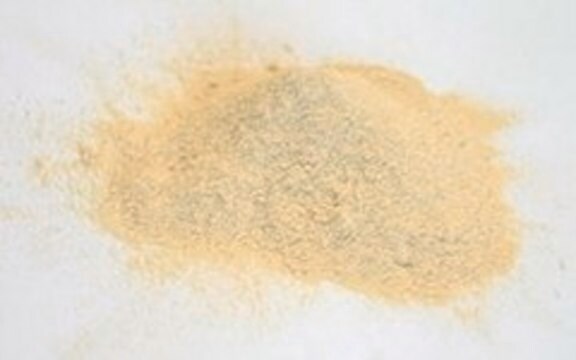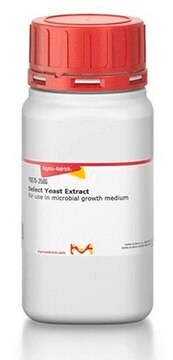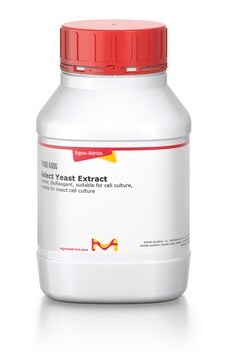09182
Yeast Extract
for technical purposes (in fermentation)
Synonym(s):
YE, Baker’s yeast extract
About This Item
Recommended Products
biological source
Saccharomyces cerevisiae
Quality Level
grade
for technical purposes (in fermentation)
sterility
non-sterile
Assay
≤3% amino-nitrogen basis
≥9% total nitrogen (N) basis
form
powder
shelf life
limited shelf life, expiry date on the label
composition
amino-nitrogen, ≤3%
total nitrogen (N), ≥9%
impurities
≤16% ash
≤8% non-dissolved
loss
≤8% loss on drying
pH
6.5-7.5 (2% in H2O)
solubility
H2O: 2%, turbid, yellow
application(s)
food and beverages
microbiology
storage temp.
2-25°C
suitability
molds
yeasts
Looking for similar products? Visit Product Comparison Guide
Related Categories
General description
Application
Storage Class Code
11 - Combustible Solids
WGK
WGK 3
Flash Point(F)
Not applicable
Flash Point(C)
Not applicable
Personal Protective Equipment
Choose from one of the most recent versions:
Already Own This Product?
Find documentation for the products that you have recently purchased in the Document Library.
Our team of scientists has experience in all areas of research including Life Science, Material Science, Chemical Synthesis, Chromatography, Analytical and many others.
Contact Technical Service




